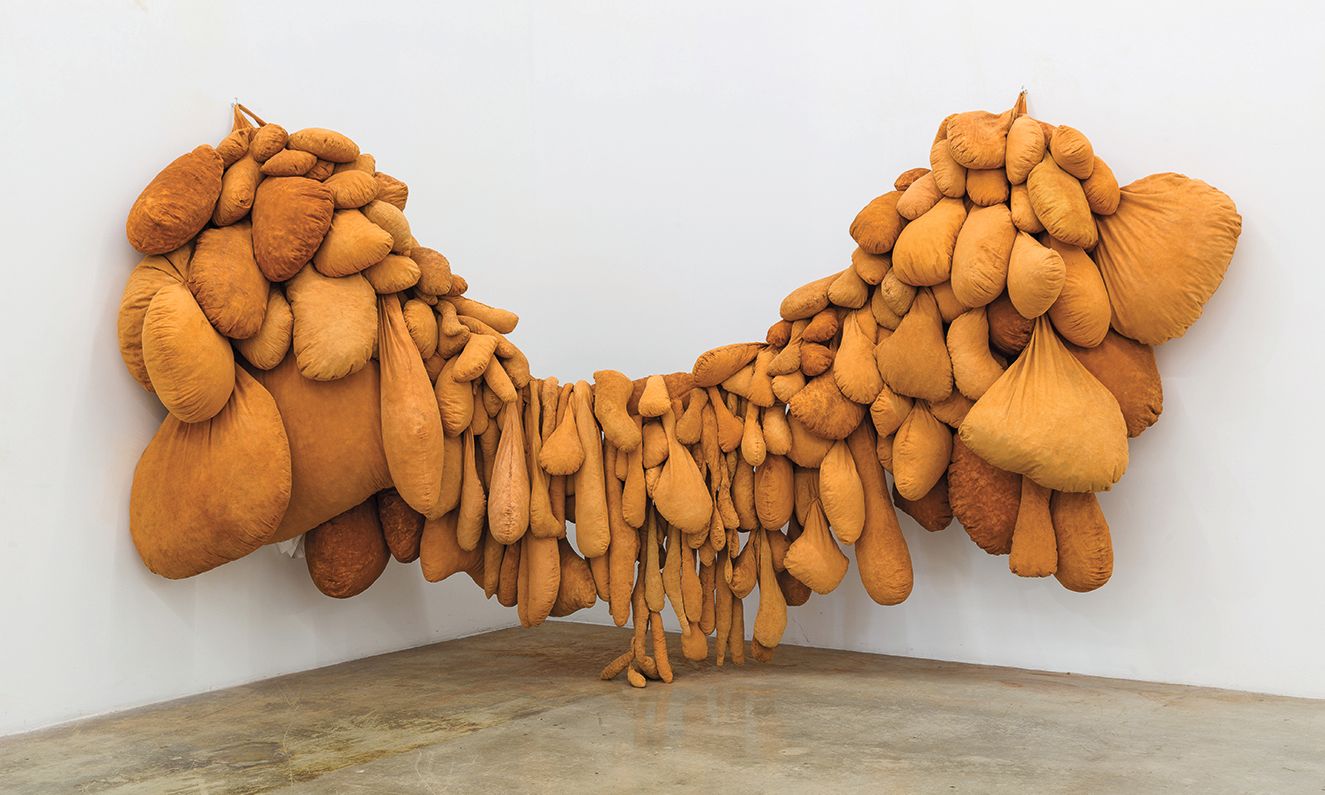Solange Pessoa’s Hammock (part of 4 Hammocks, 1999-2003) at the Barbican
Courtesy of Rubell Museum, Miami and Washington, DC. Photo: Chi Lam
Textiles and fabric loomed large in the life and art of Louise Bourgeois. So her response to the 1969 show Wall Hangings at the Museum of Modern Art (MoMA) in New York now feels surprising.
In an interview in Craft Horizons magazine, Bourgeois damned the works, which included pieces by Sheila Hicks and Magdalena Abakanowicz, with faint praise. “If they must be classified,” Bourgeois said, “they would fall somewhere between fine and applied art.” She added that they “rarely liberate themselves from decoration”.
Bourgeois, then preoccupied with sculpture, wanted Wall Hangings to be “wilder”, to explore textiles’ three-dimensionality more profoundly. The installation limited the audience’s ability to see the works—like Abakanowicz’s towering knotted forms, the Abakans—in the round. Still, it’s striking to read a habitual hierarchy-challenger like Bourgeois reinforcing the boundary between applied and fine art.
Now, as then, we are witnessing—as the organisers of Wall Hangings put it—a “new spirit of the weaver’s art”. A cluster of group shows are attempting to harness this moment and explore it in diverse contexts. Woven Histories: Textiles and Modern Abstraction recently closed at the Los Angeles County Museum of Art and now travels to the National Gallery of Art, Washington, DC (17 March-28 July), and eventually to MoMA. Meanwhile, Unravel: The Power and Politics of Textiles in Art opens at the Barbican Art Gallery in London on 13 February (until 26 May) before heading to the Stedelijk Museum, Amsterdam (14 September-5 January 2025). And a Hayward Gallery touring show, Material World: Contemporary Artists and Textiles, will appear in UK venues from October.
I hope no one today would be bothered about the distinction Bourgeois bolstered. Because such attitudes hampered the progress of the great artists using textiles in earlier periods, including linchpins of the international Fiber art movement of the 1960s, and thus necessitated their current re-investigation—Hicks only had her first UK retrospective at the Hepworth Wakefield in 2022, while Abakanowicz’s Tate Modern show of that year was her first in almost half a century.
But there are reasons to be hopeful: as the excellent catalogue to Unravel suggests, textiles are uniquely placed to navigate complex socio-political moments. Their historical association with norms of gender, sexuality and identity make them ripe for subversion and reimagining. They are often informed by community, indigenous or pre-colonial practices that give them a potency in commenting on legacies of exploitation and extraction. And they are freighted with a metaphorical language—of entanglement, interweaving and threads—that lends them scope for transcultural lyricism.
Separated from old hierarchies, we need not be suspicious, as Bourgeois was, of decoration, especially when allied to complex content. One need only look at Igshaan Adams, who features in Woven Histories and Unravel and has a solo exhibition at the ICA Boston opening this month (13 February-15 February 2025). Adams explores the memories and topographies of Bonteheuwel, the segregated township in South Africa where he grew up, in a way that has both conceptual rigour and potent meaning, alongside extraordinary craft and even a formal wildness that Bourgeois might have approved of. He proves that textiles can be as radical as any medium.

